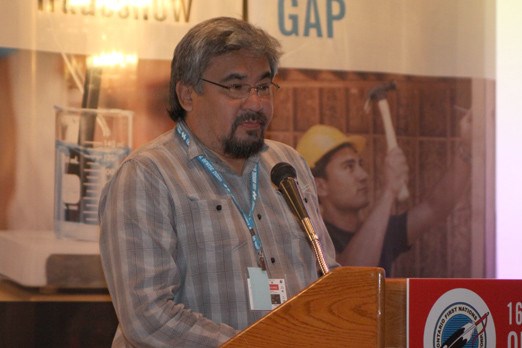Without the necessary transportation infrastructure, development in the Ring of Fire cannot happen, said Raymond Ferris.
"They need the infrastructure," said the Matawa First Nations’ Ring of Fire coordinator, noting a proposed railway from the Ring of Fire area to Nakina is vital.
Ferris spoke about the infrastructure needs of First Nations communities surrounding the Ring of Fire Wednesday afternoon at the Ontario First Nations Technical Services Corporation Technical Conference and Trade Show at the Valhalla Inn.
"They can’t fly out the chromite; it’s too big of a bulk," he said. "From what I hear, the railway is the cheapest mode of transportation. The road is going to be close to 400 per cent more in transporting costs."
Companies like Cliff’s Natural Resources have offered to provide money for the railway, but a company official said in June that ultimately it will be provincial infrastructure. Ferris said First Nations are also looking at taking ownership of the project.
"We understand the services provided to the mining industry is enormous and the First Nations want to capture as many opportunities as possible," he said.
Ferris also said it’s important for the remote communities to be involved to protect the environment and their culture.
"The North is going to open up and there will be an influx of people," he said. "We need to understand all these impacts."
The province’s Ring of Fire Coordinator Christine Kaszycki also spoke at the conference to provide context for First Nations members interested in what the infrastructure needs for the Ring of Fire are and how to support growth in the communities.
She said at the regional scale, the mining companies are looking at the different transportation infrastructure options and those things are continuing to move forward.
"Over the longer term, one could see the opportunity for looking at infrastructure needs from an energy and transmission perspective," she said. "The communities themselves, many of the remote First Nation communities, will be interested in understanding how they can support community and economic development."
